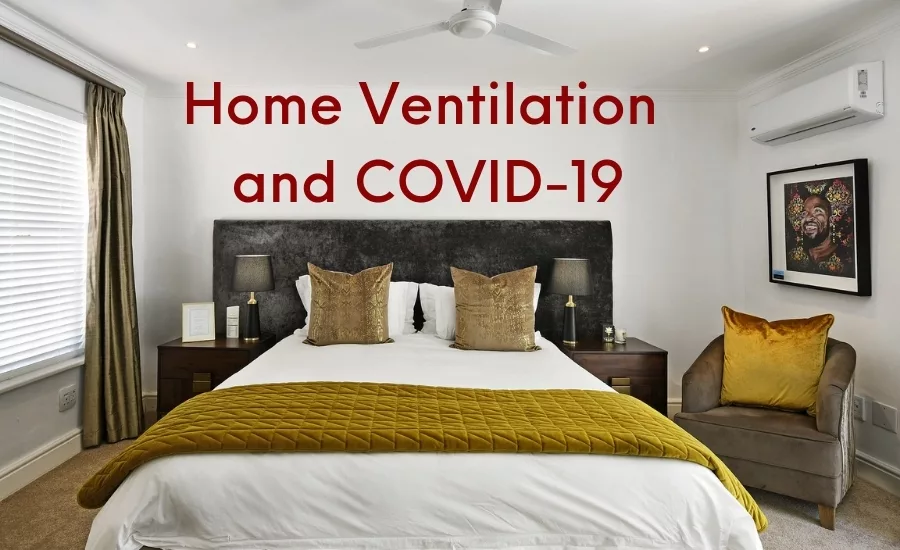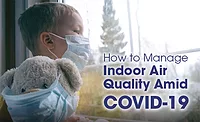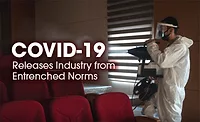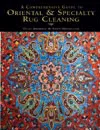Home Ventilation and COVID-19
How ventilation prevents the spread of COVID-19 indoors.

For the past six months, Americans have been bombarded with officials’ implorings to wash their hands, stay six feet apart, and wear a mask. And in turn, the ‘three w’s’ have certainly helped to curb the rise of COVID-19 in some areas. But as the coronavirus is new (although it seems like it’s been here forever), scientists are continuing to learn new things about it and its transmission. The latest coronavirus topic? How ventilation prevents the spread of COVID-19 indoors.
The research to this effect is definitely sound. In July, 239 scientists from 32 countries wrote an open letter to the WHO showing evidence that tiny virus droplets people expel when they cough or sneeze can hang in still air for hours, making crowded indoor spaces with poor ventilation risky for the spread of COVID-19.
Then, in late August, a team of infectious-disease experts argued in a new analysis in the peer-reviewed medical journal, BMJ, that six-feet protocols are too rigidly small and are based on outdated science and studies of different viruses. Instead, these experts now believe the evidence shows that the novel coronavirus can travel farther than six feet under certain conditions and that six feet is the bare minimum of space that should separate people, especially in poorly ventilated indoor areas.
With the start to return to school and work this autumn and winter, and people spending generally more time indoors, good home ventilation will be key to prevent the spread of COVID-19 indoors. Here’s how restoration companies can help ensure proper ventilation in the homes and businesses of their clients and stop the spread of the virus:
Keep it Fresh
Trust your nose. If you walk into a room or building where the air feels stuffy and stale, turn around and leave because chances are, the ventilation is insufficient. And without proper ventilation, COVID-19 could spread indoors.
Simply put, the more outside air that enters a building, the better. Bringing in fresh air dilutes any contaminant in a building, whether a virus or something else entirely, and reduces the exposure of anyone inside. “Having 100% outside air or close to 100% is a good thing,” says Prof Cath Noakes of the University of Leeds. “The more fresh air, the less you’re running the risk of recirculating the virus through the building.”
In warm weather, it’s pretty easy to get a larger amount of outside air into a building by keeping windows and doors open (or cracked if the AC is on) and by putting a box fan in a window blowing out which can greatly increase the air exchange rate.
In cold weather, try micro-ventilation. This means that you just crack open one window in each room to permit a little fresh air to enter. To help keep the room warm, switch ceiling fans to “winter” mode. Most ceiling fans have a switch that reverses the blade direction. This reversal pulls the cold air up and pushes the warm air downwards.
Check the Air Conditioner
If a building you enter has a split air conditioner (a slim white box mounted on a wall or ceiling), try not to spend too much time there or you might risk COVID-19 spreading indoors. All air conditioners recirculate air, but smaller ones like these don’t have the filtering capacity of larger, outside units.
For many homes, it is recommended to use a MERV-12 level filter that removes particles down to 1.0–3.0 microns as a good medium between effective filtration and likely compatibility with the existing equipment. (Note: Since higher-rate filters allow less air to flow through a furnace, it’s a good idea to check if the system has a maximum MERV rating. The wrong type of air filter can force a furnace to work harder and increase the risk of it breaking down.)
Use Air Cleaners
Lew Harriman, director of research & consulting at HVAC consulting company Mason-Grant, and a member of the ASHRAE Epidemic Task Force, says concerning filtration, “Don’t let the air conditioner carry that load. Frankly, you should have an air purifier even if you’re not concerned [about airborne viruses].”
Air purifiers remove particles from the air, usually using a filter made of tightly woven fibers. They can capture particles containing bacteria and viruses and can help reduce disease transmission when used along with other best practices recommended by CDC and others. But not all air purifiers are equal. Here are some points to keep in mind:
- Your best option is a cleaner that uses a high-efficiency particulate air (HEPA) filter, as these remove more than 99.97% of all particle sizes
- Think about how powerful an air cleaner you’ll need. The bigger the room – or the more people in it – the more air needs to be cleaned.
- Scrutinize the validity of the claims made by the air cleaner manufacturer. The Association of Home Appliance Manufacturers (AHAM) certifies air cleaners, so look for their verified seal.
Use a CO2 Meter
Since the coronavirus is most often spread by breathing, coughing or talking, you can use this meter that checks CO2 levels to see if the room is filling up with potentially infectious exhalations. A well-ventilated room will have around 800 ppm of CO2. Higher numbers are a sign the room may need more ventilation.
Good air quality is just one way to help protect yourself, your families and coworkers. A higher air quality helps prevent the spread of COVID-19 indoors. The EPA states, “By itself, increasing ventilation is not enough to protect people from COVID-19. When used along with other best practices recommended by CDC and others, increasing ventilation can be part of a plan to protect people indoors.” So use ventilation alongside following the rest of the CDC’s guidelines; social distance, wash your hands, wear a mask, and treat frequently touched surfaces with disinfectants.
Looking for a reprint of this article?
From high-res PDFs to custom plaques, order your copy today!







